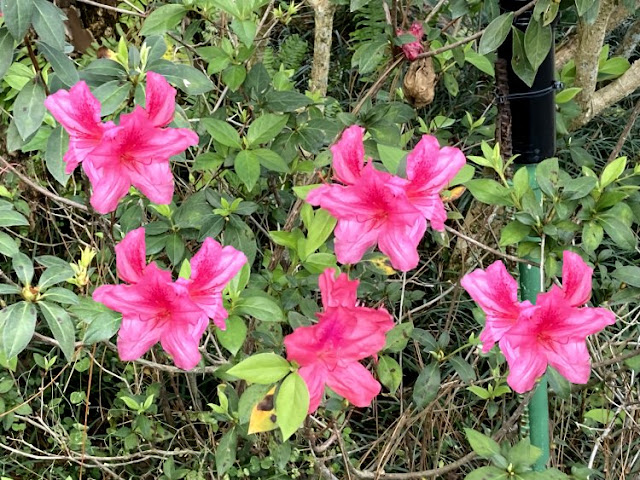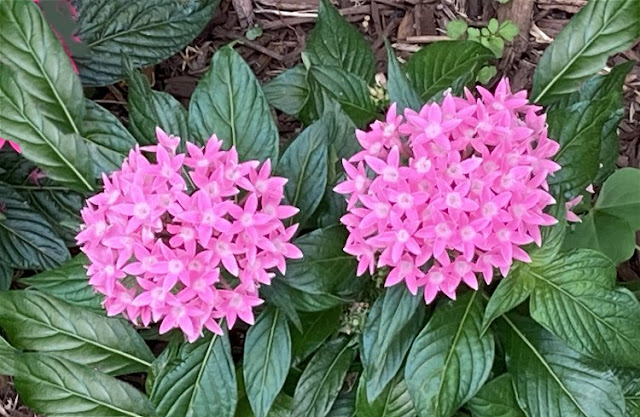There were a number of cultures in Pre-Columbian Peru, on the coast
and in the mountains, in the North and in the South. Many of the objects
in the exhibit were from the Moche Culture (100-700 A.D.) and the
Chimu Culture (700-1450 A.D.), when they were conquered by the Incas.
This gold breastplate, earspools, and crown were found in a Chimu
lord's tomb.
The gold was hammered from behind to create the
images in repoussé. The earspools have a series of
masks on them, and a wooden peg four inches long
behind, which went through a hole in the ear.
A Chimu gold headpiece, earspools, necklace, and
nosepiece, found in the tomb of a warrior-priest/
The image is the "Feline Monster," a very
common motif.
Chimu gold headpiece, nosepiece, and pectoral, made
of pieces of gold sewn on a cloth backing.
he two gold earspools have a series of "snakes" ending
in "trophy heads." They would have jigled softly when worn.
Gold crown, earspools, necklace, and breastplate.
Chimu, c. 1400 A.D.
Gold crown with dangling pendants.
Two Chimu keros = ceremonial drinking mugs.
The one on the left side is tipped and ready to be used.
The one on the right side have been turned over to look
nice on a shelf. Notice the cat-like eyes, typical in Chimu objects.
Pre-Columbian potters were great masters. They did not have
a potter's wheel, so built forms up with coils. After
firing, they were burnished with smooth stones.
They built vessels in he form of every animal, sea creature,
and occupation of humans. This is a monochrome black cat
from the Chavin Culture on the North Coast, c. 100 B.C.
This colorful polychrome vessel was made by a Nasca potter.
The Hummingbird motif is very common. This form is
called double spout and bridge. Some of them would whistle
as liquid sloshed around while being carried.
This is a double-spout-and-bridge vessel with one spout blocked
to make a whistling jar.
This is a feather mosaic banner. It was made by sewing thousands of tiny feathers
from macaws onto a fabric backing. The Incas made the finest.
Two Moche earspools of gold, turquoise, and inlaid shell. The
turquoise had to be imported from Central America, so we know
they had extensive trading networks.
Two gold Moche earspools with a warrior figure inlaid with turquoise and shell.
which were a mnemonic device to send messages. Messengers were sent with these tied around
their necks, and they could be read by specially trained officials.
The Moche were some of the greatest potters. Here you
can see the stirrup handle form. The captive stag is a very
famous pot. In the center is a "Narrative Pot" depicting a
scene of battle. Pre-Columbian peoples had no written language,
so these pots and drawings are our chief source of knowledge
about them.
Moche. Small dog.
Moche. There are pots depicting skulls, flayed bodies,
sacrificial figures, whales, cripples, etc. etc.
The Moche also made vast number of "Portrait Jars."
Scholars argue whether these represent specific persons
or not. 500 A. D.
There are many pots in the form of musicians. Here is
a Moche flute player.
This is a powerful lord with armed retainers below.
Machu Picchu was a fortress built by the Incas in the late 15th century on a mountaintop.
Its purpose was to guard their empire and major highway. They controlled the whole West
Coast of South America from Columbia to Chile. They had two major highways, to march
troops and for merchants - one along the coast and the other up in the mountains. This is
the mountain highway carefully protected. There were excellent videos and films from
drones of Machu Picchu that we watched.
__




























































